How 5 Legacy Vendors Are Redefining Cloud Storage: Analysis
Cloud storage is not so simple as just storing data on a cloud, but in practice means businesses keeping data on premises in multiple clouds. Moving data between the different components of a hybrid multi-cloud world is increasingly a job best handled by companies that were managing data before the cloud was born.

“Cloud Storage” Redefined
What images does the term “cloud storage” conjure up? The unlimited storage capacity of Amazon Web Services, Google Cloud Platform, or Microsoft Azure? The behind the scenes capacity from companies like Wasabi? Someplace to put personal or business files like Dropbox or Box? Server vendors like Dell Technologies or Hewlett Packard Enterprise or IBM?
Dell? HPE? IBM? Cloud storage?
Actually, those vendors, along with legacy on-premises storage vendors like NetApp and Pure Storage, are actually playing a key role in cloud storage. Yes, they, like maybe hundreds of other companies, provide capacity for storing data on a cloud. Yet they are critical in making data available to users whether that data is needed on-premises, on the cloud, or moving back and forth between the two and between multiple clouds.
[Related: Storage Vendors Evolve With The Times: 2023 Storage 100]
And a lot of data has yet to make it to the cloud. Global data and business intelligence firm Statista in July estimated that 57 percent of data in the U.S. and the U.K. is stored on the cloud, while 43 percent is stored in on-premises infrastructure.
And for many if not most users, it’s not using THE cloud. It’s actually a case of using many clouds. Businesses are living in an increasingly hybrid multi-cloud world, one where data moves between the cloud and on-premises infrastructures. Analyst firm Enterprise Strategy Group in February estimated 86 percent of organizations regularly migrate applications and/or data from on premises to the cloud, while 81 percent of organizations find application and data portability to be complex. About 88 percent of organizations agree that multi-cloud operations provides strategic benefits for them.
Cloud storage providers like Google, AWS, and Azure are really good at letting data in, but don’t make it easy to take it out. Yet businesses may want to have data moving between clouds and on-prem depending on cost, performance requirements, and access of applications.
And that’s where the legacy storage vendors come in. Starting with NetApp, the major storage vendors have gradually realized their customers live in a hybrid multi-cloud world. The vendors all now provide ways to tie their on-prem arrays to the cloud for easy migration, not only from the arrays to the cloud and back, but also between clouds. And their storage software is increasingly a part of the cloud itself where an AWS or Google user may be using NetApp or Pure Storage software to manage their cloud data.
The term “cloud storage” is being re-defined. Read on to see how the top five legacy storage vendors (alphabetically below) are on the cutting edge of cloud storage, along with a look at their latest offerings.
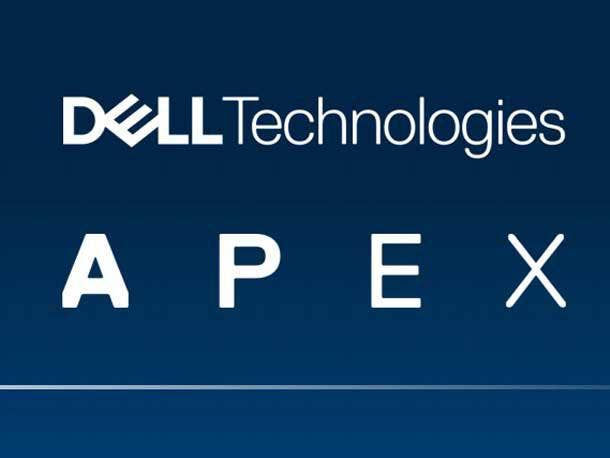
Dell Apex Storage for Public Cloud
Of all the major legacy storage vendors, Dell was one of the last to tie its storage to public clouds. Dell, thanks to its 2016 acquisition of storage giant EMC, was and still is the largest provider of on-premises storage capacity, but has in the last couple of years taken advantage of its storage technology and virtualization prowess to make the move to the cloud.
Dell’s cloud storage capabilities today are primarily focused on its Dell Apex cloud and as-a-service platform. The company in May introduced Dell Apex Storage for Public Cloud, which is aimed at bringing its enterprise data storage performance and software capabilities to public clouds while providing a unified approach to Dell cloud storage and Kubernetes management. New this year was the introduction of Dell Apex block storage capabilities for AWS and Microsoft Azure, as well as Dell Apex file storage capabilities for AWS. The company also unveiled Dell Apex Protection Storage for Public Cloud to provide data protection storage for AWS, Azure, Google Cloud, and Alibaba Cloud.
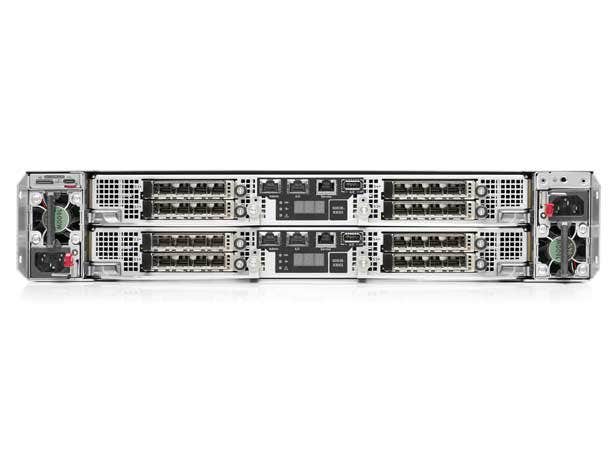
HPE Alletra Storage MP
Hewlett Packard Enterprise, one of the world’s largest providers of data storage technology, now brings much of that technology to market via its HPE GreenLake cloud and as-a-service platform. Offerings, including storage under HPE GreenLake, are wrapped around a common set of services from edge to cloud to public cloud.
HPE’s Alletra Storage family of arrays serve to run any application from edge to cloud, and adds a cloud experience for each workload with its AI-driven HPE InfoSight predictive intelligence, cloud-like user experiences, and the ability to offer as-a-service consumption.
The April release of the HPE Alletra Storage MP brings to HPE GreenLake several new capabilities, particularly the ability to orchestrate and manage file and block data services from a single unified platform. This includes HPE GreenLake for File Storage, a scale-out service that takes advantage of a partnership with storage software developer Vast Data. which develops a resilient file service. It also includes an expansion of HPE GreenLake for Block Storage with a 100-percent data availability guarantee and improved price-performance metrics.
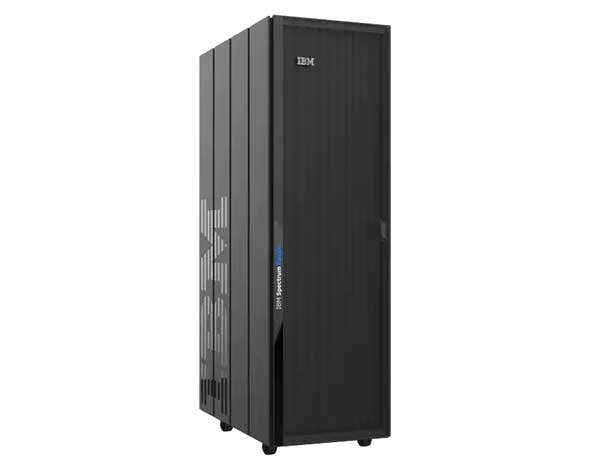
IBM Storage Fusion
While IBM still offers a solid line of on-premises storage arrays, the company has in the last couple of years been investing heavily in its software-defined storage technologies. Formerly known under the IBM Spectrum moniker until early this year, they include a wide range of technologies for storing, managing, and protecting data both on premises and in public and private clouds.
IBM, which in mid-2019 acquired Red Hat, late last year assimilated the Red Hat storage technology into the IBM storage business, and integrated the Red Hat OpenShift Data Foundation and IBM Spectrum Fusion. The integrated offering, now known as IBM Storage Fusion, is a cloud-native platform to simplify and scale data services for containerized applications. IBM Storage Fusion provides persistent storage, resilience, security, mobility, and cataloging of Kubernetes applications on the OpenShift platform.
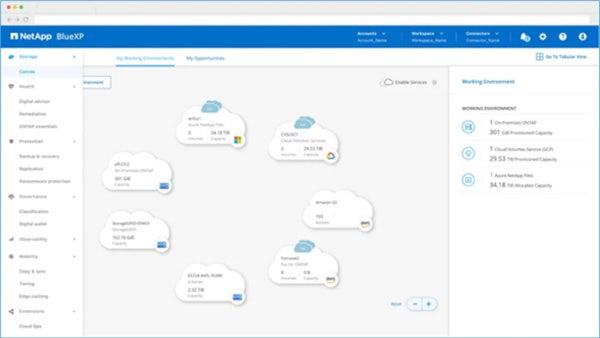
NetApp BlueXP
San Jose, Calif.-based NetApp, the largest independent storage vendor, also happened to be the first to recognize the importance of applying its storage technology to the cloud back when other legacy storage vendors were more concerned about keeping data in their own arrays. NetApp builds cloud storage capabilities into all its on-premises arrays and ensures its software provides the same features and services across on-prem and cloud environments. NetApp currently has strong ties with all the top cloud hyperscalers, including OEM arrangements whereby some top cloud providers use NetApp technology to manage their customers’ storage.
NetApp in June updated its NetApp BlueXP unified control plane for managing storage and data services across on-premises and private and public cloud environments, providing a single interface for configuring and monitoring storage and data services across those environments. New in NetApp Blue XP are improved automation, increased cyber resilience across hybrid cloud environments, and improved ease of use. This includes full automation of data snapshots and backups, support for customer-managed encryption keys in Azure Active Directory and Azure KeyVault, and more.
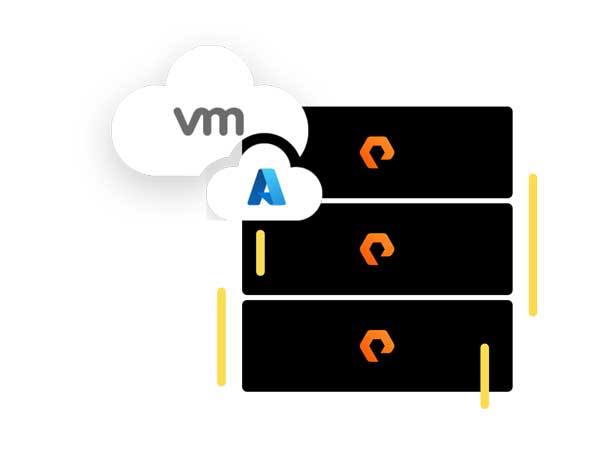
Pure Cloud Block Store for Azure VMware Solution
Pure Storage, which was founded in 2009 making it the youngest of the top legacy storage vendors, from the beginning had a focus on all-flash storage. However, its storage operating system from the start was ready to manage data whether on premises or in the cloud. The Santa Clara, Calif.-based company has in the last couple of years moved to bring all its storage capabilities and services to cloud environments. This includes its Pure Fusion storage cloud operating model that manages data across on-premises and cloud environments in an integrated fashion, and Evergreen//One storage as a service across on-prem and the cloud.
Most recently, the company introduced Pure Cloud Block Store for Azure VMware Solution, a new technology that brings Pure Storage’s block storage capabilities to VMware workloads in Microsoft Azure to help optimize costs with its data reduction technology and ability to decouple storage costs from compute costs. It provides ransomware security with always-on, policy-driven snapshot creation and protection, and adds flexible disaster recovery.